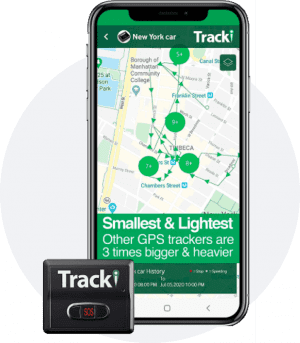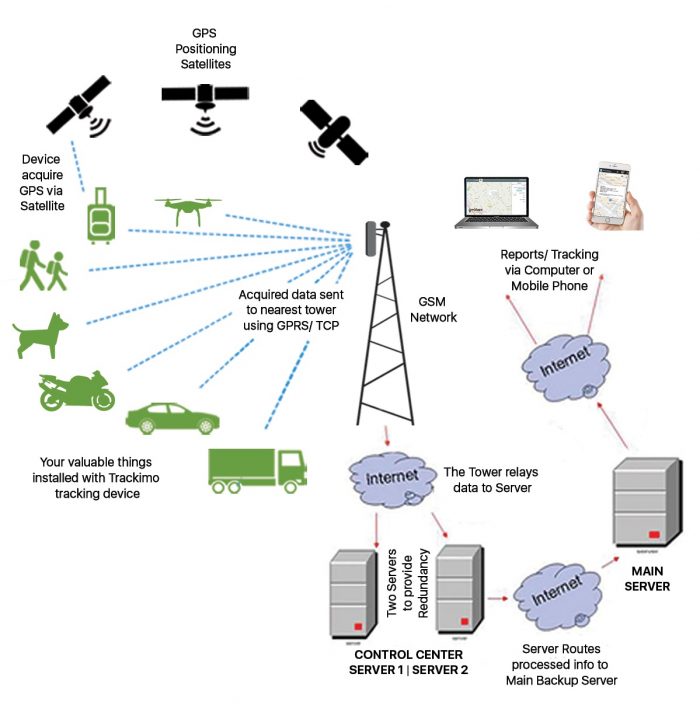Also available at Tracki.com for $28.88

How GPS Tracker Works

Ever found yourself driving in circles around a long and confusing highway? Or maybe you were out on a vacation and saw that the pathway isn’t the same as the maps say. It can be mind-boggling and time-consuming, right?
Fortunately, you have your GPS device to turn to. GPS, or global positioning system, is no doubt one of the most convenient inventions of the twenty-first century. It makes use of 24 to 32 solar-powered satellites and their ground stations to transmit information to GPS-enabled devices like your vehicle or smartphone. Initially, the government limited the use of GPS to military purposes. But over time, it has bridged its way to different private and public sectors.
The main idea of GPS systems is to determine the location of a certain object or person in real time. GPS tracking systems utilize the global navigation satellite system (GNSS) network. Each of these satellites in orbit sends microwave signals to a receiver. The receiver then uses these signals to calculate your precise location from at least four of the GPS satellites. Finally, your location is determined once the system triangulates your exact position on the planet to the nearest meters based on these distances.
The process follows a simple mathematical principle called trilateration. To complete the mathematical calculation, GPS receivers uses the accurate position of at least 4 satellites and the distance to each to estimate 4 values: earth latitude, earth longitude, elevation and time. The position and distances to a given satellite determines the position of the receiver. The accurate position of a satellite is repeatedly transmitted to all receivers in line of sight and usually require open sky. The distance to a satellite is found by the precise time the satellite transmission arrives at the receiver. The time generated each satellite’s atomic clock is transmitted by the satellite at preset intervals.
How a GPS Tracking Device Works
GPS tracking devices work on the same principle, but instead of displaying information on the device itself, the microprocessor on the device will calculate its location and transmit the concluded data to a server over the Internet using worldwide GSM cellular network. That server hosts a platform that end users can access and view the device’s current and past historical path, speed and alerts. All this data is then served via the internet and displayed on an end user device using a desktop app or to a smart phone using iPhone or Android app.
A GPS tracking system can benefit anyone. For business owners, it can be deployed to track the position of their fleet monitoring the behavior of employees. GPS systems are also helpful for small-time users as well. For example, families have used GPS devices to keep track of elderly, children or pets. Travelers have also attached GPS devices to their luggage to prevent it from getting lost or stolen.
When selecting a GPS tracker, consumers will have to decide if they want an active real time or passive tracker. Passive trackers do not allow users to follow every move that a tracked person or object makes. The information must be obtained and then downloaded onto a computer. These types of trackers are usually more affordable, as they don’t require a monthly fee.
Active trackers, on the other hand, process and deliver data in real time using a SIM and a GSM transceiver. Dispatchers receive real-time information via the GSM cellular network allowing them to closely monitor their assets or precious things. Monthly fees are charged to pay for the cellular network services.
In case that the GPS satellites signal is blocked being indoor or by a structure, since there is no sky, not allowing for the GPS satellites signal to get through, the device is looking for cell tower signals and by cell tower signal strength triangulation trying to estimate rough location.
The GPS tracker determine where the device is located and roughly estimate the distance between the cellphone towers by interpolating signals between adjacent towers. A precision of down to 100 meters may be obtained in urban areas where mobile traffic and density of cellphone towers is sufficiently high. Rural and desolate areas which has less towers per square mile may see miles between base stations and therefore inaccurately determine locations often showing a location miles away from the device real location.